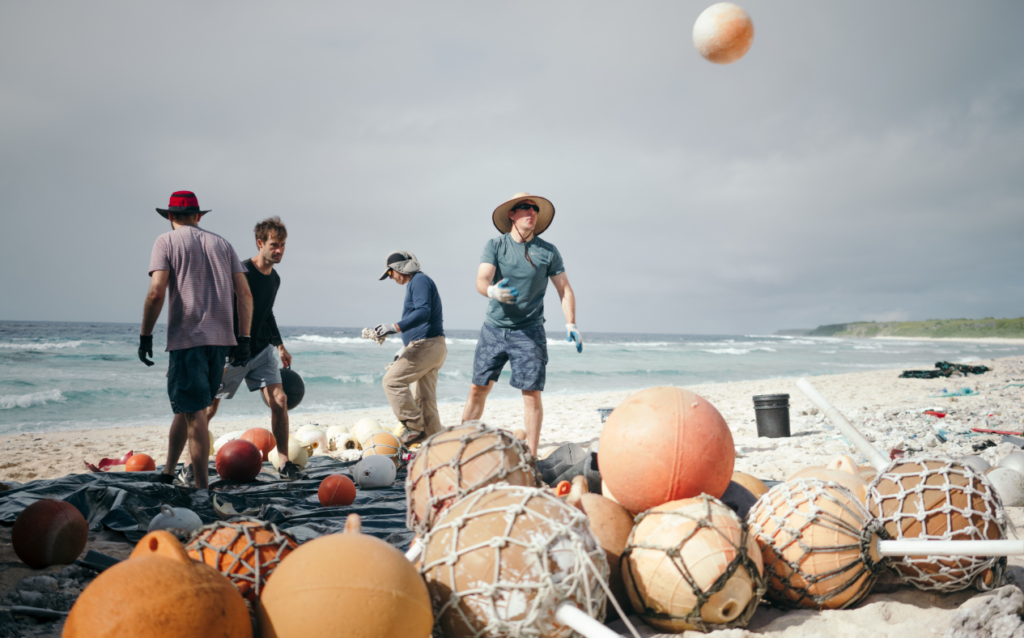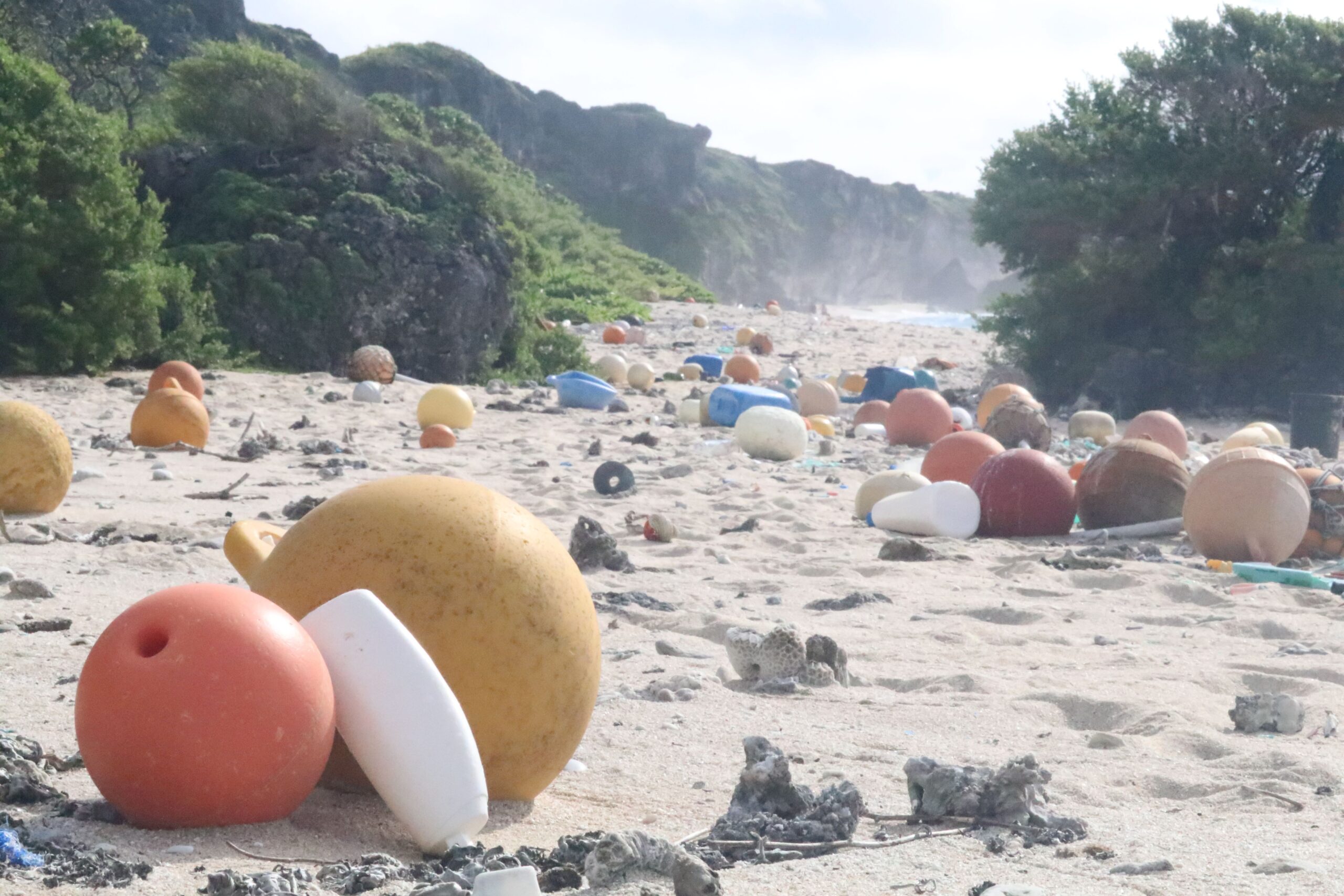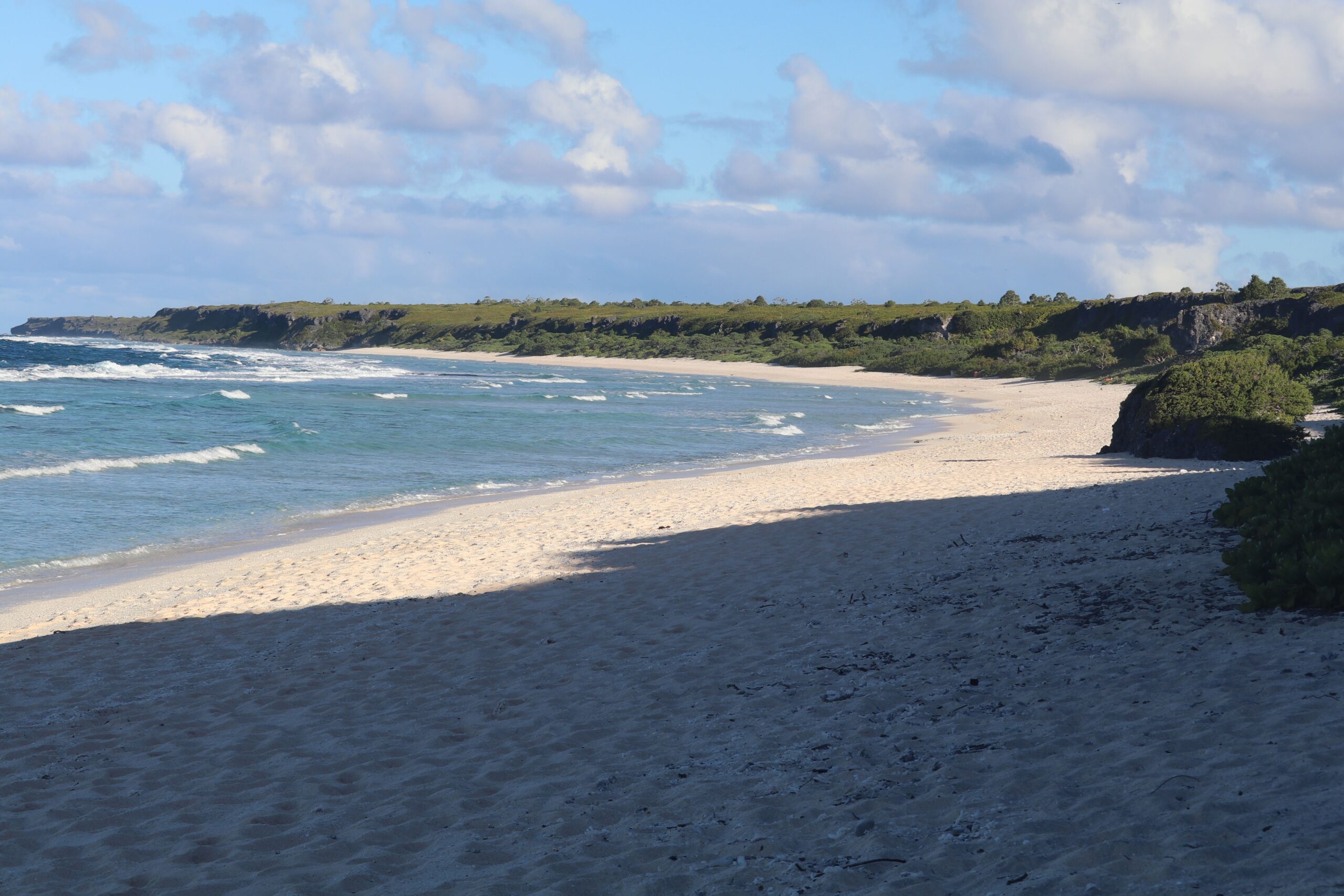A pinprick in the South Pacific Ocean between Australia and Chile, the uninhabited Henderson Island is one of the most remote places on Earth. It is also home to the world’s highest density of trash. Though the island’s beaches were awarded UNESCO World Heritage Site status in 1988 and they lie within the planet’s third-largest marine protected area, an estimated 10 tons of plastic waste had washed ashore over the years.
In June 2019, PERC enviropreneur Brett Howell was part of the Henderson Island plastic pollution expedition. The team hit the beach from various angles in an effort not only to clean up the island but also to collect information that would help address the wider issue of plastic pollution. Teams worked to gather scientific data on plastic density and the waste’s impacts on birds, crabs, and sea life. They also photographed the pollution before cleaning up the beaches.
Over the course of 10 days, Howell and his beach cleanup team successfully removed nearly 14,000 pounds of garbage, successfully tidying up the entire 1.4-mile beach—down to bottle-cap-sized waste. “We are in a World Heritage Site, this pristine beach,” Howell said during a primetime Fox News broadcast about Henderson Island,” and you expect to come down off this cliff and have breathtaking views. You absolutely do, but every step you take, there is a piece of plastic.”
The waste on the beach was so dense that, on average, it took the full-time, four-person team an entire day to clean a 300-foot stretch of sand. Though Henderson Island is located in a protected marine area where fishing is banned, more than half of the garbage Howell and his team collected was attributable to the global fishing industry, including 1,200 buoys and a dozen fish-aggregation devices. Though some of the debris might have come from illegal fishing boats or rigs, much of the trash that ends up on the island is carried to it by the South Pacific Gyre, a powerful current that sweeps across the ocean.
“Some of the ‘traceable’ garbage we found included a workboot from the Netherlands, a construction hard hat from Pennsylvania, a Bacardi bottle from Puerto Rico, Suntory Whisky bottles from Japan, a refrigerant container from the U.S., a PET water bottle from Malaysia, and what appeared to be a shampoo bottle from Indonesia,” said Howell. “We also found extensive amounts of fishing-related items from New Zealand, including one crate from a company that went out of business in the late 1990s.
“If the state of uninhabited, remote, Henderson Island isn’t a wake-up call that we need to change our global supply chains and get to a circular economy,” he continued, “I don’t know what is.”
Yet, even after finding the volume of trash Howell and the team did on the expedition, they remain optimistic that, through market approaches, we can curb the growing issue of plastic pollution. In particular, Howell is hopeful that plastic waste will be repurposed into low-cost housing material. One potential solution is to send collected plastic to Costa Rica, where the Center for Regenerative Design and Collaboration can turn the plastic into cement, a process that would create both jobs and homes.
While there’s still much to do to solve the problem of plastics pollution in our oceans, the Henderson Island plastic pollution expedition shows how efforts by private groups and innovative repurposing can be parts of the solution.






